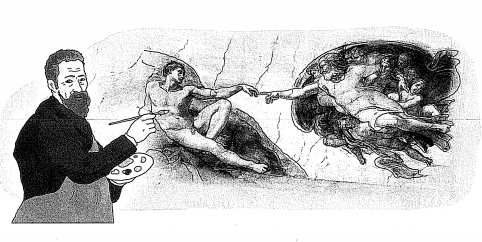Questions 1-3 are about the following passage.
A fresco is a painting that is done on wet plaster. The word "fresco" comes from an Italian word that means fresh. This is because frescoes are painted when the plaster is still wet. Once it dries, the artist can no longer add to the fresco. Usually, the plaster takes about ten hours to dry, giving an artist only 7-9 hours of painting time.
Frescoes are not usually created today, but rather they are an art form of the past. The artist Michelangelo is famous for his frescoes. The ceiling of the Sistine Chapel in the Vatican in Rome is a fresco painted by Michelangelo. It is magnificent and impressive.
Artists became good at painting plaster walls to show exactly what they wanted. Sometimes they would dig into the plaster to create depth. This would make their fresco look better and even more realistic.
The most famous frescoes were created around the time Michelangelo lived, during the Renaissance. The Renaissance focused on beautiful art in a way that it hadn't been focused on before. Since Italy was the center of this movement, many frescoes were painted in Italy.
